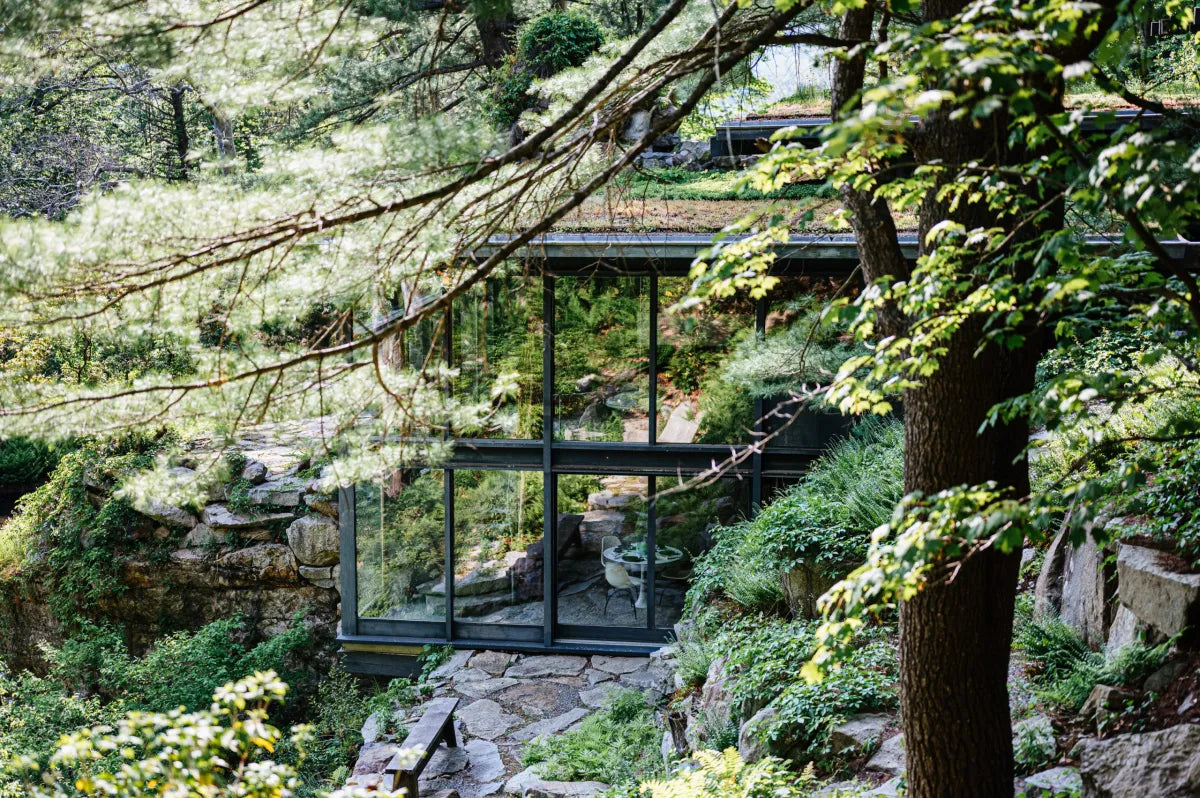A day trip just waiting to be planned…
The Plan, Made Just for You
Where Are We Headed?
MANITOGA | The Russel Wright Design Center
How Are We Getting There?
Why ZZ Loves It!
Russel Wright & The Modern American Home
His best-selling book, “A Guide to Easier Living,” which he co-authored with his wife, Mary Small Einstein Wright — a salient designer herself — cast a vision of an idyllic life, describing how efficient design can reduce housework and increase leisure. For him, design was pragmatic.
Ahhh, just think of that life — days filled with rest and the most beautiful designs!
“I believe with religious intensity that good design is for everyone.” – Russel Wright
Wright’s best-known design, a colorful ceramic dinnerware set, is the most widely sold dinnerware in American history. Manufactured between 1939 and 1959, his smooth, simple designs reached a record of more than 250 million pieces sold.

He is credited as the first to use lifestyle marketing to sell his designs, and the lifestyle he sold was a vibrant, modern one that left the sentiments of the Depression and War behind.
Today, a collection of Russel and Mary Wright’s groundbreaking designs is on display at Manitoga, filling the interior of the home and studio. It’s a dramatic contrast of industrial design amidst a natural expanse. Yet, in a sense, this was always Wright’s concept.
Situated on 75 acres of the Hudson Highlands, the property was first acquired in 1942. However, construction of the home and nearby studio did not begin until the 1960s, after the death of Wright’s wife.

After studying the acreage for years, Wright partnered with David Leavitt to build a home directly into the rock ledge of the ground’s quarry. He desired the work to be hyper-local, built of — and within — the terrain itself. (Shall we say… locally sourced?!)
"I wish this shelter to blend with the landscape… I will make it of the rock to be found there, of the lumber to be found there, and I will cover it with the vines that are native.” – Russel Wright
The house features sweeping windows and a cedar tree trunk that functions as the main structural support of the house. Boulder walls, a green roof, and stone flooring blend the interior with the exterior, man-made with artificial.

Beyond being the home Wright lived in till he died in 1976, Manitoga was meant to be an example, albeit an exaggeration, of what a home could be. Wright desired for it to be seen and inspiring.
It seems only right then that on any average weekend — needing only a train ticket in hand — one can leave the city for the natural sentiments of upstate and end up at his home, fulfilling his wish and honoring his legacy with a single day trip.

